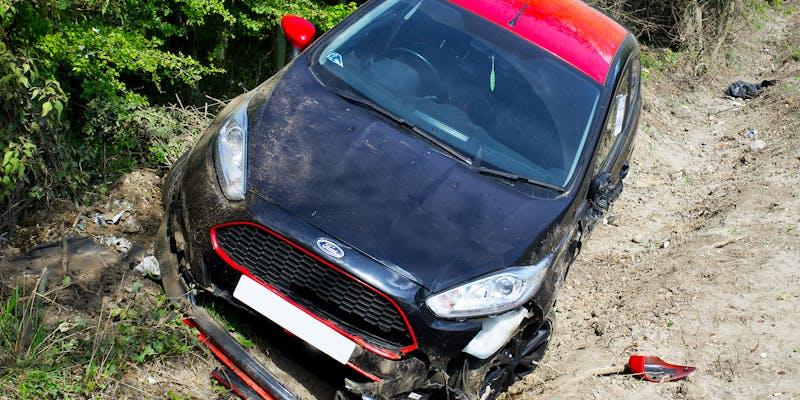Car accident liability insurance covers injuries and property damage. If sued for a car accident, liability insurance pays legal expenses. Legal fees, judgments, and settlements are included. Liability coverage is crucial to a complete auto insurance policy. Most states require this most expensive policy component, which should be balanced. If your car insurance accepting liabilities does not cover all medical expenses from a crash you prompted because of inadequate liability coverage, you risk bankruptcy.
There are times when liability insurance is useful, such as:
- The back of the car in front of you and your GPS are in your sight.
- You swerve and hit someone else's car by accident.
- You accidentally hit the gas instead of the brake, and your car crashes into your neighbor's fence.
Coverage of Liability Car Insurance

Liability insurance covers medical fees and repairs if your car injures someone. Hence, keep an eye on the release of liability from the car. Moreover, two things are needed for liability auto insurance:
- Bodily Injury Liability: Under physical injury legal responsibility coverage, payouts for injuries to at least one person and more than one human in an unmarried car collision are limited. If you prompted the crash, this insurance covers the opposite motive force's scientific and misplaced profits.
- Property Damage Liability Coverage: If you cause property damage in an accident, your legal responsibility insurance can pay up to a designated amount.
Limits of Coverage of Liability Car Insurance
Liability insurance excludes several things. If someone takes your car, fixing or replacing it won't help. Alternative automobile insurance can address this issue. Some common auto insurance policies are:
Collision Insurance
Even though collision coverage may protect you financially in an accident, you need to assess your risk tolerance and finances to decide if the extra expense is worth it. Safe driving reduces or eliminates collision insurance.
Comprehensive Insurance
Comprehensive insurance and release of liability form car covers more than just accidents, giving you piece of mind. Your insurance should be reviewed and updated often to prepare you for road situations.
Personal Injury Protection
Personal injury protection and clinical bills insurance will cover your and your passengers' medical payments irrespective of who induced the coincidence. First, you need to know is a car is an asset or a liability. Some injured people must get hold of private damage protection (PIP), while others can no longer afford it or can decide.
Umbrella Policies and Limited Costs

Your liability insurance will cover other people's injuries and property damage if you cause a car crash. This is the coverage limit of car insurance accepting liabilities. Most states require minimal liability coverage, which may not protect you in a collision. Liability car insurance limitations are usually three figures. It may be 15/30/5. The first two figures cover injuries, and the third covers property loss. Let's define 15/30/5:
- One individual is protected for $15,000 per accident in bodily harm or death.
- 30 means $30,000 for many injuries or fatalities in one occurrence.
- Five indicates each accident has $5,000 property loss coverage.
You need 100/300/100 car insurance accepting liabilities to sue for an automobile accident. With a lot to lose, you may desire larger restrictions. What is the meaning of 100/300/100? Let's break it down:
- $100,000 for one accident victim.
- $300,000 if multiple people are wounded.
- $100k per accident for property damage.
Remember that liability insurance helps others. It doesn't cover car accidents or damage.
Your vehicle insurance coverage's liability limits, as much as $500,000 for physical harm legal responsibility, may not cover everything if you experience a catastrophic automobile twist of fate that leaves others with massive clinical payments, restoration prices, or lawsuit settlements.
If you need extensive liability coverage, consider umbrella car insurance accepting liabilities. Umbrella insurance provides $1 million or more coverage. After your liability auto insurance runs out, your umbrella coverage kicks in. According to the Insurance Information Institute, $1 million coverage costs $150300 annually.
How Much Is Liability Insurance?
The cost of car insurance accepting liabilities depends on numerous factors:
- Speeding tickets and other moving infractions
- Your claims history
- The coverage you buy
- Your age
- Gender
- Marital status
- Occupation
- Credit (credit is outlawed in California, Hawaii, Massachusetts, and Michigan)
Because each company calculates auto insurance premiums differently, rates vary substantially. You may discover cheaper liability-only automobile insurance by looking around. It's wise to compare auto insurance quotes from multiple firms.
States Without Liability Car Insurance in New Hampshire
Many New Hampshire drivers don't need the release of liability from the car. You must show financial responsibility if you cause an automobile accident. New Hampshire requires car insurance in other situations:
- You must prove insurance after being at fault for an accident without it.
- You must provide evidence of insurance for three years after a DWI conviction.
- Decertified as a habitual offender, you must demonstrate insurance to get your license reinstated.
- To keep or get your license, you must attend an administrative hearing for certain violations (such as demerit points) and buy insurance.
- Auto insurance is a smart strategy to avoid accident costs even without a mandate. NH liability auto insurance must be 25/50/25 if you buy coverage.
Example of Car Liability Insurance
What liability automobile insurance might look like in a state without no-fault insurance. Say the driver's car insurance accepting liabilities company provided this coverage:
- Per-person bodily injury liability limit of $60,000.
- Accidental bodily injury limit of $150,000
The insured is in an accident with other people and is found to be responsible for any losses.
- Person A's medical bills are $30,000.
- Person B's medical bills are $40,000.
- Medical bills for Person C total $50,000.
The at-fault driver's responsibility would also be covered because each accident victim had medical bills under $60,000. All parties (excluding the at-fault driver) paid $120,000, less than the per-accident bodily injury maximum.




